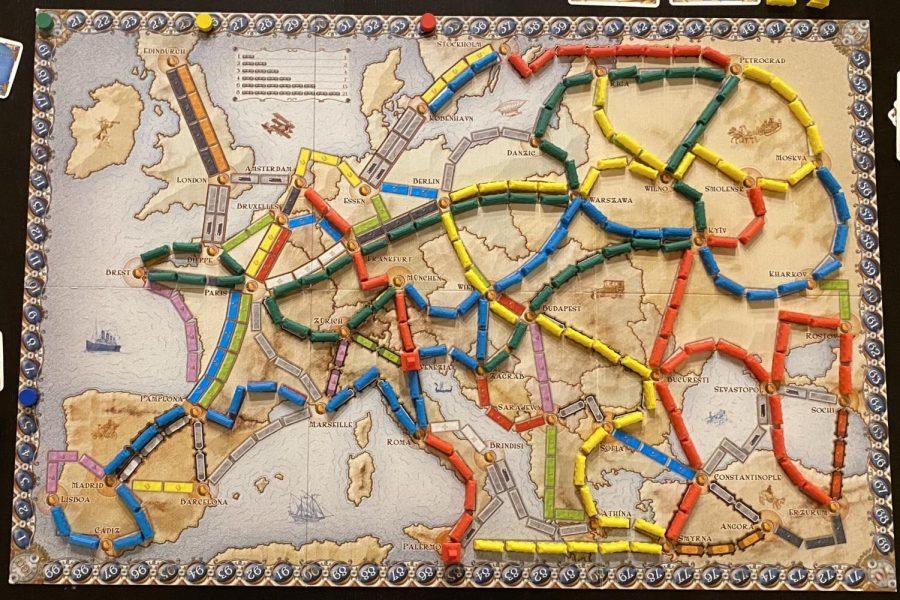I chose to focus Ticket to Ride. Ticket to Ride is a board game created by Alan R. Moon, where players get to connect their favorite cities through railroads. Points are awarded for a few different reasons. Players get points when they complete “objectives” which also count against them at the end of the game if they are not completed, or through building long tracks or by having the longest continuous railway. This is a family-oriented game with audiences ranging anywhere up from 10 years old.
I would argue the challenge level is appropriate for the audience. The game is not particularly challenging, and I think that is part of the point. It is a fun game that involves some strategy, some deception, and some luck. There is a low barrier for what can be considered a “good” player and no matter how “expert” you become; your strategic advantage will likely not outweigh your luck every time. The pacing of the game does not change too much throughout. There is a slight rush towards the end of the game, but players are given a chance to wrap up before they are left on the platform (yes, a train pun).
The game symmetry is extremely balanced. Every single player has the same shared board to play on and, on every turn, they have the same opportunity to build the same tracks. The only asymmetric points of this game are 1) the objectives selected at the start, 2) the turn order they go in, 3) their luck picking out resources. The turn order and luck are almost impossible to deal with and honestly don’t give anyone an unfair advantage (part of it is just luck). The objectives at the start are also not asymmetric but because of some intentional decisions made by the designer. At the start, players draw more objectives than they need to complete, and they can discard any objective they do not want. This dumping opportunity makes it so that no player is stuck with a terrible objective and everyone is more likely to draw a good objective.
The balance of strategies in the game is where it all falls down. No matter how well I’ve been speaking about the balance so far, this alone makes the game almost unplayable for me. The best strategy in the game, according to my experience and that of those I spoke to, is building long railways for points and disregarding the objectives. The game forces you to complete at least 2-3 objectives (which all players do easily). After that, building a single 6-carriage railway might be worth as much if not more than an entire objective (which is also harder to achieve). Also, remember that any unfinished objective counts against the player at the end of the game. In my experience, players fight for who can build the longest railways even if they are disconnected from anything else or don’t add to an objective. After a while, the essence of the game of connecting cities, building continuous railways and completing objectives is lost completely.
The balance between the game objects seems fine to me. I can only think of a few different game objects (aside from the objectives I mentioned before). You can select regular-colored carriages or chameleon locomotives that count for any color. As far as resources go, a locomotive counts for two single color carriages. However, there are good reasons why you would pick either over the other. Some tracks require at least one locomotive, which makes the sacrifice of one resource instead of two worth it. On the other hand, if picking two carriages means you’ll be able to build tracks faster.
All in all, the game is fun although personally I don’t think it is strategically balanced. It goes to show how 3/4 categories can work perfectly fine but if a single one is flawed enough it can throw the entire game off.



